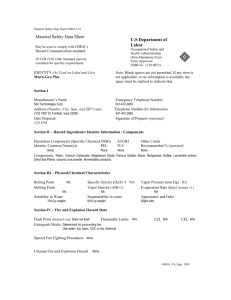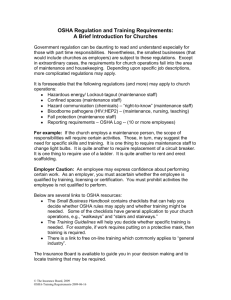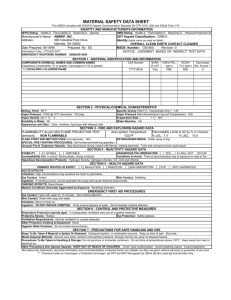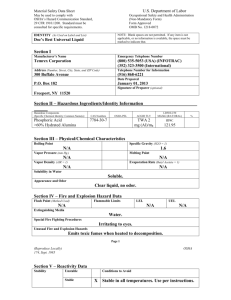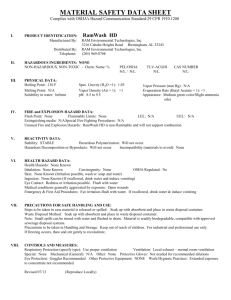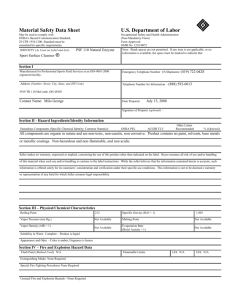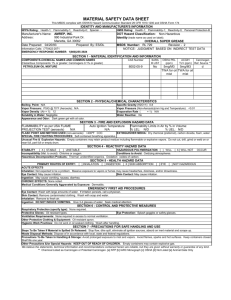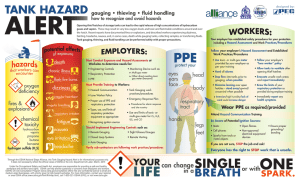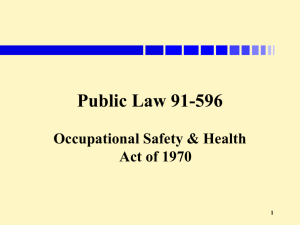OSHA General Duty Requirement When the Occupational Safety
advertisement
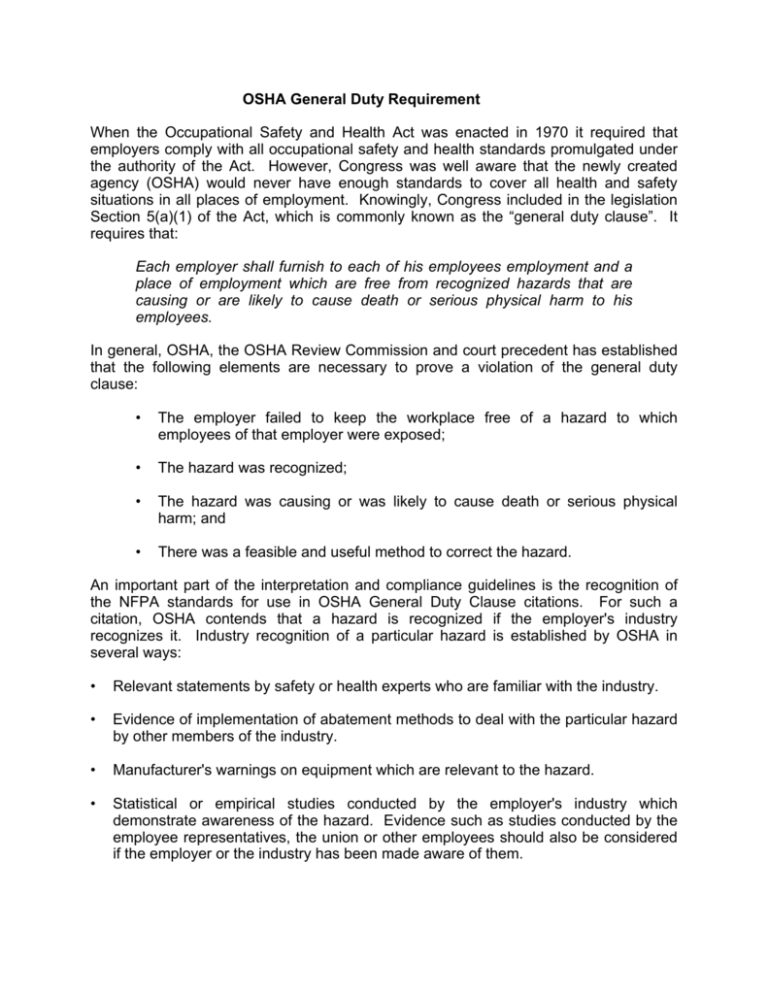
OSHA General Duty Requirement When the Occupational Safety and Health Act was enacted in 1970 it required that employers comply with all occupational safety and health standards promulgated under the authority of the Act. However, Congress was well aware that the newly created agency (OSHA) would never have enough standards to cover all health and safety situations in all places of employment. Knowingly, Congress included in the legislation Section 5(a)(1) of the Act, which is commonly known as the “general duty clause”. It requires that: Each employer shall furnish to each of his employees employment and a place of employment which are free from recognized hazards that are causing or are likely to cause death or serious physical harm to his employees. In general, OSHA, the OSHA Review Commission and court precedent has established that the following elements are necessary to prove a violation of the general duty clause: • The employer failed to keep the workplace free of a hazard to which employees of that employer were exposed; • The hazard was recognized; • The hazard was causing or was likely to cause death or serious physical harm; and • There was a feasible and useful method to correct the hazard. An important part of the interpretation and compliance guidelines is the recognition of the NFPA standards for use in OSHA General Duty Clause citations. For such a citation, OSHA contends that a hazard is recognized if the employer's industry recognizes it. Industry recognition of a particular hazard is established by OSHA in several ways: • Relevant statements by safety or health experts who are familiar with the industry. • Evidence of implementation of abatement methods to deal with the particular hazard by other members of the industry. • Manufacturer's warnings on equipment which are relevant to the hazard. • Statistical or empirical studies conducted by the employer's industry which demonstrate awareness of the hazard. Evidence such as studies conducted by the employee representatives, the union or other employees should also be considered if the employer or the industry has been made aware of them. • Government and insurance industry studies, if the employer or the employer's industry is familiar with the studies and recognizes their validity. • State and local laws or regulations which apply in the jurisdiction where the violation is alleged to have occurred and which currently are enforced against the industry in question. and most importantly, • Standards issued by the American National Standards Institute (ANSI), the National Fire Protection Agency (NFPA), and other private standard-setting organizations, if the relevant industry participated on the committee drafting the standards. The reference of national consensus standards for guidance in enforcement under the General Duty Clause [5(a)(1)] can only be used when there is absence of specific OSHA standards. The general duty clause is an important tool for enforcement of OSHA standards for fire fighters. 2
